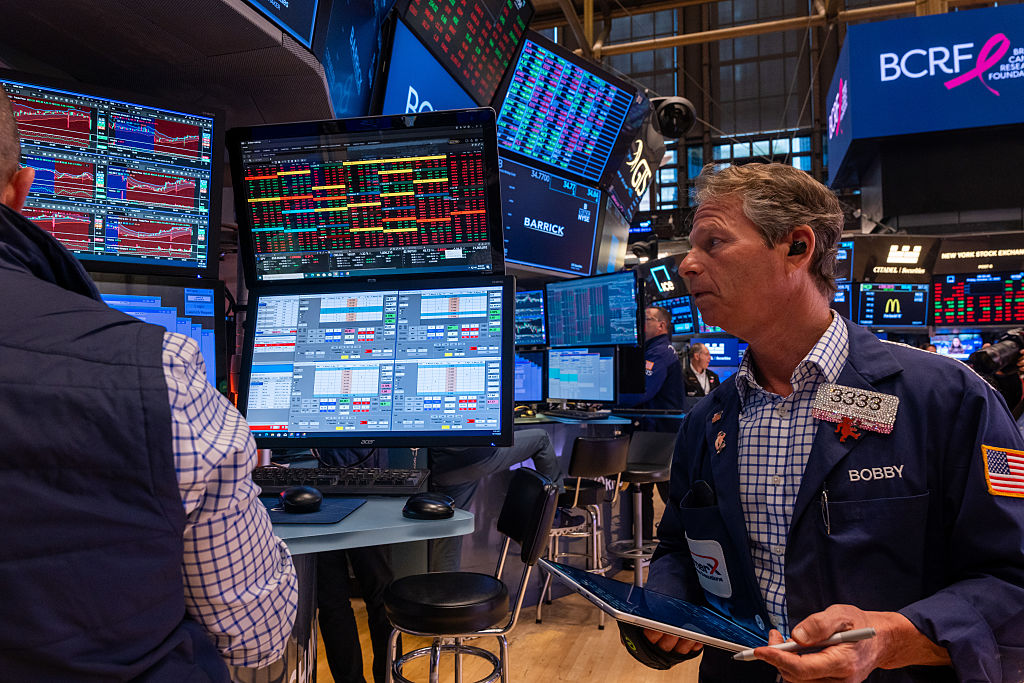Seven ways to go soft on commodities
Bird flu in Asia. Hurricanes in Florida. A new Starbucks on the High Street. What do all of these have in common? They're driving up the prices of certain soft commodities.
Bird flu in Asia. Hurricanes in Florida. A new Starbucks on the High Street. What do all of these have in common? They're influencing soft commodity prices. From beef to sugar and soybeans, Kevin Kerr reveals what he likes right now.
Soft commodity markets: meat
A year ago, the average choice grading steer fetched around $85.50 per cwt to the meat packer. (The abbreviation 'cwt' stands for hundredweight. Hundredweight simply means 'per 100 pounds specified weight.' It is always qualified as the type of weight used for cattle.)
Two weeks ago, the average was $94.44 cwt, an increase of
MoneyWeek
Subscribe to MoneyWeek today and get your first six magazine issues absolutely FREE

Sign up to Money Morning
Don't miss the latest investment and personal finances news, market analysis, plus money-saving tips with our free twice-daily newsletter
Don't miss the latest investment and personal finances news, market analysis, plus money-saving tips with our free twice-daily newsletter
$3.32 over the previous week. Translation: Prices for cattle in the cash market are climbing fast and they will most likely continue to do so. Demand is the driver. As more countries reopen their markets to U.S. beef, demand will increase. Meat packer margins are hovering at break- even levels. Right now, tight cattle supplies and plentiful inexpensive feed will likely result in a firming up of the cattle price. This holds true especially for cattle producers and feedlot operators.
Then, of course, there's avian flu. If one case of bird flu migrates to the United States and infects one person, people will swear off poultry and head right to the meat aisle in the supermarket. In reality bird flu is not actually spread by eating poultry, but often in trading perception is reality and just the threat of bird flu is enough to get the general public to shun poultry. Even though eating it isn't the cause of the illness, the general public won't differentiate. And who would want to bite into a chicken of death when they could opt for a nice juicy steak?
What mad cow? Typically, market participants have a short memory, so it's important to act on fear while it's still in full swing. The cattle and meat markets in general are the butt of many jokes in the investment world. Truth be told, the meats are a good agricultural market with solid fundamentals and can be a great learning market for the novice trader - just make sure no one knows you're a novice.
In 2006 I carried October live cattle positions and made some very good profits on the 86 call options, and later on the 88 call options. The cattle market is a volatile one and relatively illiquid, so it can be a difficult market if you're just starting out. You may want to avoid it until you get some experience.
Soft commodity markets: tropicals
The coffee, sugar, and cocoa markets are near and dear to my heart. These three commodities are also known as the tropicals, because most grow in the tropics, or softs, I guess because they're all soft in texture. But whatever you want to call them, these are some of the best performing and least understood or talked about markets. I spent much of my early career running between the pits of the coffee, cocoa, OJ and sugar markets, and let me tell you, these are markets that trade like no others. Gold and oil may get the lion's share of the sound bites and headlines, but if excitement is what you're looking for, these markets have it.
Sugar, for example, is one of my favourites. It is growing exponentially in demand as a result of ethanol production and being widely used in foodstuffs; meanwhile the supply is shrinking due to factors such as European subsidies being curtailed. Sugar is likely to double in a couple of years, in my opinion, and the writing is already on the wall. Much the same can be said for markets like cocoa and coffee.
Worldwide demand is sucking up supplies faster then these commodities can be harvested. I know the coffee market well - very well, in fact. It's one of the first markets I traded when I started out in commodities 18 years ago. It's also one of the fastest-moving and most volatile markets, which means it's loaded with opportunity for you to make a lot of money. This is a good example for talking about one of the best features of trading
commodities: the ability to short a market just as easily as going long. That's correct - unlike equities, you can short commodity futures just as easily as going long.
A market like coffee is particularly important because of its volatility but also because a new Starbucks pops up on every corner from Maine to China and every farmer who could possibly grow coffee beans is doing so, resulting in a glut of beans on the market. Even Juan Valdez, from the TV commercials, hung up his sombrero in 2006. Coffee is thus one of those markets you can play from both directions to get maximum profits - something futures allow you to do, with astounding results.
Soft commodity markets: cotton
Cotton gave this maniac trader his start. My first full seat was on the New York Cotton Exchange (now the New York Board of Trade). My badge was 8015 QUEST, as in Jonny Quest, a US TV character from a '60s cartoon series. (I was young and had blonde hair and a dog named Bandit; when the guys on the floor found out I had done cartoon voiceovers as a kid, the name just stuck. Everyone gets a nickname down there, and it usually isn't something you'd choose for yourself.)
In any case, cotton is an 'old boy' market, much like cattle or the grains - not old as in stale, but old in that it has been around a very long time and the people who trade it have been doing it a very, very long time.
Cotton is a great market to trade, but you must understand the fundamentals at work and the differences between old crop and new crop. This simply means that two different cotton crops are produced each year in cotton, and you must make sure you know which crop you're looking at and then make your decisions based on that. Cotton is one market that's crucial not to underestimate and, much like the ocean, never turn your back on. Trust me, I worked in there for a number of years.
Soft commodity markets: orange juice
Right next door is another very active market, especially in the winter and during hurricane season: orange juice. Orange juice is a perfect market for learning about fundamentals the hard way. Perhaps you have seen the movie Trading Places, with Eddie Murphy and Dan Aykroyd. If you haven't seen it, do - it will give you a good laugh. The movie was filmed on the old World Trade Center trading floor and was about trading OJ, but the reality stops there (or does it?). Actually, with tongue in cheek, I can say that it's probably a fair depiction of the old trading pits.
Today, however, the OJ market is tightly controlled by supply and demand and is certainly ruled by weather factors - not just winter hard freezes, either. It may surprise you to know that hurricanes in Florida are the biggest factor influencing this market, not only before the hurricane hits but after, too. The main concern is citrus canker; after the winds and rain die down, this fungus can develop on the crop. Fundamental information like this is important to know and take into consideration when initiating a position.
Soft commodity markets: the importance of research
Every market is different, so you must study the fundamentals for all of them. For example, you must understand what soybean meal is used for as opposed to soybean oil. Soybeans are used for biofuel, among many other things, so nowadays soybean prices more closely parallel those of crude oil and heating oil than those of the regular crop reports.
Keep in mind that these markets move on the basis of supply and demand. Right now, the demand for soybeans is picking up in a big way due to biofuel consumption, which in turn relates to how high heating oil prices are. It's not hard to connect the dots to identify what affects a specific commodity, but sometimes you've got to do a little research first. Biofuel is used primarily for home heating, and as ethanol is derived from corn, biofuel is derived from soy. The bottom line is that you must know, inside and out, the basics about whatever commodity you choose to trade, whether it's rough rice or natural gas. More importantly, you need to know new factors that may affect a particular market - and these can change.
By Kevin Kerr for The Daily Reckoning. You can read more from Kevin and many others at www.dailyreckoning.co.uk
Get the latest financial news, insights and expert analysis from our award-winning MoneyWeek team, to help you understand what really matters when it comes to your finances.
MoneyWeek is written by a team of experienced and award-winning journalists, plus expert columnists. As well as daily digital news and features, MoneyWeek also publishes a weekly magazine, covering investing and personal finance. From share tips, pensions, gold to practical investment tips - we provide a round-up to help you make money and keep it.
-
 Why Trustpilot is a stock to watch for e-commerce exposure
Why Trustpilot is a stock to watch for e-commerce exposureTrustpilot has built a defensible position in one of the most critical areas of the internet: the infrastructure of trust, says Jamie Ward
-
 Tetragon Financial: An investment trust with stellar returns
Tetragon Financial: An investment trust with stellar returnsTetragon Financial has performed very well, but it won't appeal to most investors – there are clear reasons for the huge discount, says Rupert Hargreaves

